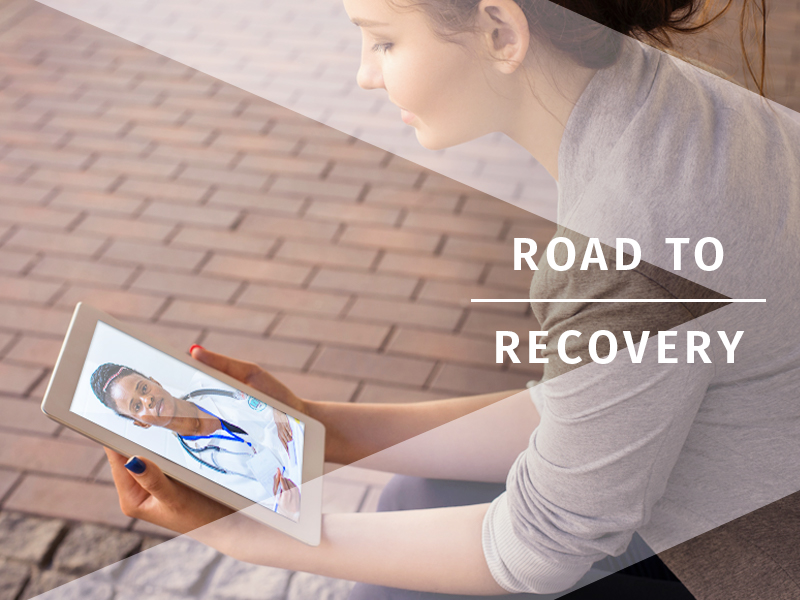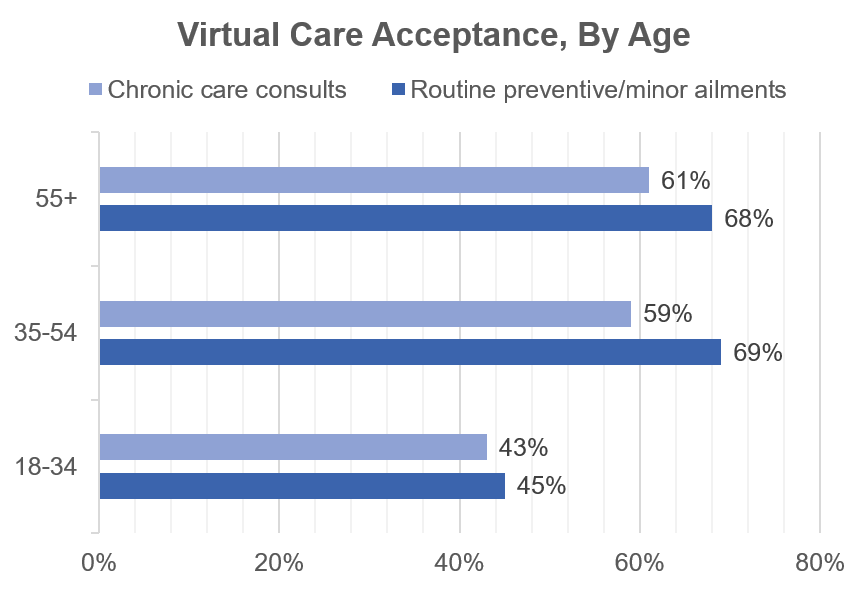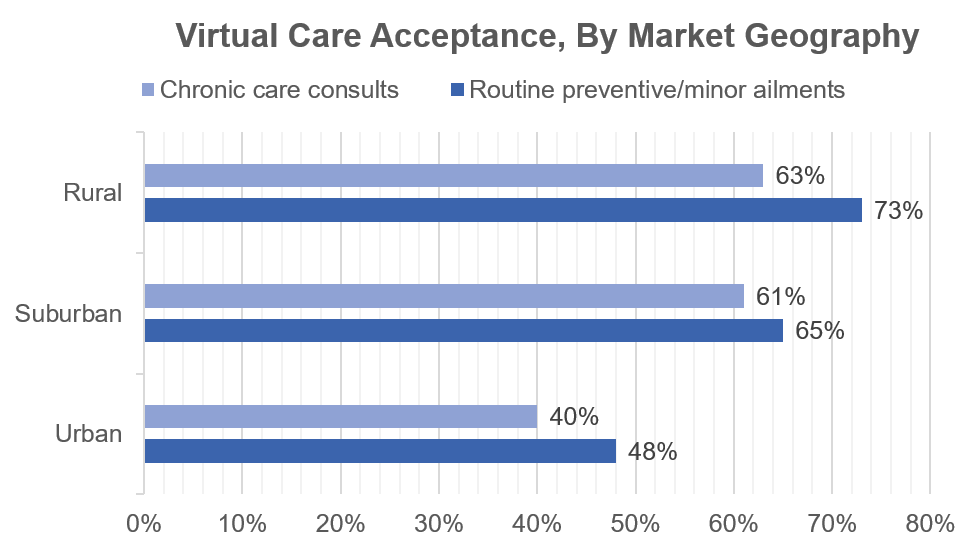Part 3: Refilling the Patient Pipeline – the Key Step on the Road to Financial Recovery: Virtual Care
Healthcare

Covid-19 is a Fracture event, disruptive on such an unprecedented scale it changes our worldview forever, having perhaps its greatest impact on healthcare. The negative financial impact is daunting – with so many appointments and procedures cancelled, it is imperative for healthcare systems to refill their patient pipeline. But this patient disruption must be addressed carefully by anticipating how COVID-19 has impacted brands and consumer selection criteria and experience expectations.
With no history to guide us forward, BVK recognized that solid and timely data is critical to understand the rapidly evolving nature of consumer attitudes and expectations as this crisis plays out. Therefore, we are fielding a 3-wave national survey occurring in late April, May and June. Our study measures brand impacts and consumer expectations for re-engaging with healthcare systems. This blog is the third in a 5-part series exploring our findings and related topics.
My mother will never do a virtual visit!
It is hard to think of anything good coming out of the COVID-19 crisis. It has had an overwhelmingly negative physical, financial, emotional, and cultural impact.
But, on a much smaller scale there is one positive development that will bode well for both healthcare providers and patients as we move beyond COVID-19. The mass cancellation of in-person visits forced usage and experience with virtual visits on both the patient and provider side. What was a slowly growing care modality most embraced by technology savvy Early Adopters, has now been experienced by people that ordinarily would not have tried it. And as you will see below, this “forced trial” has significantly and positively accelerated the adoption curve.

This table shows comfort in using different virtual options. The 59% overall comfort figure is much higher than the low double-digit findings I remember seeing before COVID-19. Forced trial allowed many to accept and even embrace that virtual care has a legitimate place in their range of care options.
And those now most interested are not who you would immediately expect. Prior to COVID-19, when successfully promoting virtual care BVK targeted Early Adopters, who tend to be younger, healthier and more urban–because our market research indicated they were most receptive to it.
At this point in the COVID crisis, older age cohorts are more likely to accept virtual care (who saw that happening!), as well as those in rural and suburban settings.


A rural skew makes sense, as virtual care is a boon for those who do not want to travel a distance to get care. And given that COVID-19 risk rises by age, it also is reasonable to expect the older cohort to appreciate the risk mitigating benefit of staying home and still receiving care, provided they were comfortable with the process and outcome.
By the way, this does not mean that the younger, healthier Early Adopter cohort does not want virtual care. They still do, as they will always be most open to technology enabled care. Rather it was the forced adoption curve for others that pushed many past reservations and helped the broader population see its advantages.
Ironically, national research also shows a real appetite for many to reconnect live and in person with their doctor. Virtual visits aren’t a perfect replacement for this kind of connection, although in conversation with patients and doctors we found many felt virtual visits were less rushed, and in some cases, more personal since the doctors were often in their own home setting.
Key Takeaways:
- Embrace virtual care as a foundational part of your care offering. If you have not yet done so, address reimbursement and physician participation to insure feasibility. Patients will now be asking for it.
- While virtual care can be an effective tool to “load level” for practices trying to come back online, it is much more than that.
- Present virtual options to patients and give them the choice as to where they want to receive care. In my last blog I mentioned the importance of choice and control, offering in-person and different virtual options demonstrates you are responding to their desire to flow to their optimal care setting.
- Develop a virtual care operations and marketing strategy now so you can ride the tide of rapid adoption before your competitors or new entrants arrive. This will help you to refill your patient pipeline more quickly.
Feel free to reach out to me at [email protected] if you have any questions or comments. And join us for a presentation on more of our survey findings and a complete recovery plan to refill the pipeline in our Road to Recovery Webinar. Click on a date option below to register:
- June 17th at 3:00 p.m. CDT
- June 24th at 3:00 p.m. CDT
- July 8th at 3:00 p.m. CDT
- July 15th at 3:00 p.m. CDT
